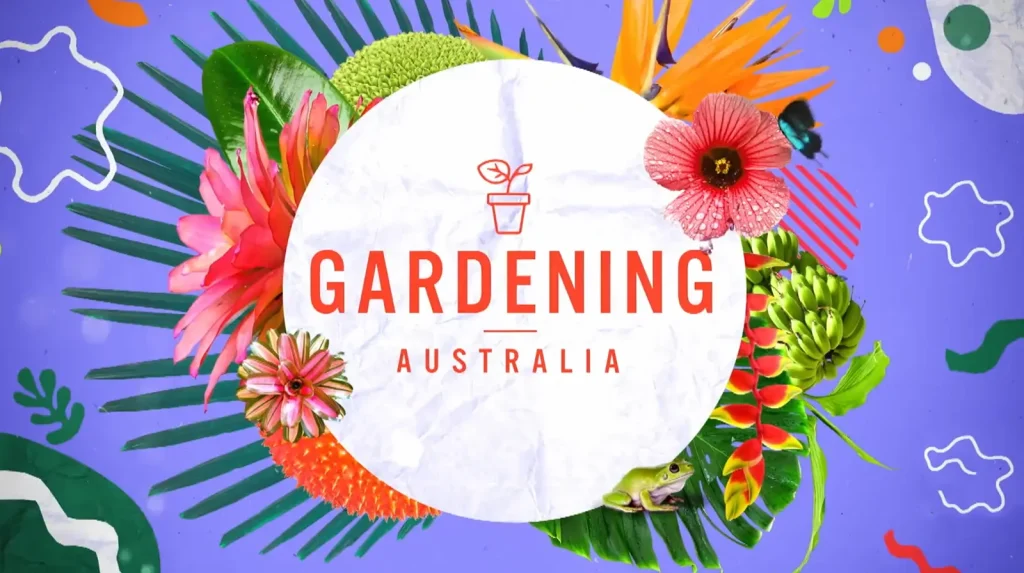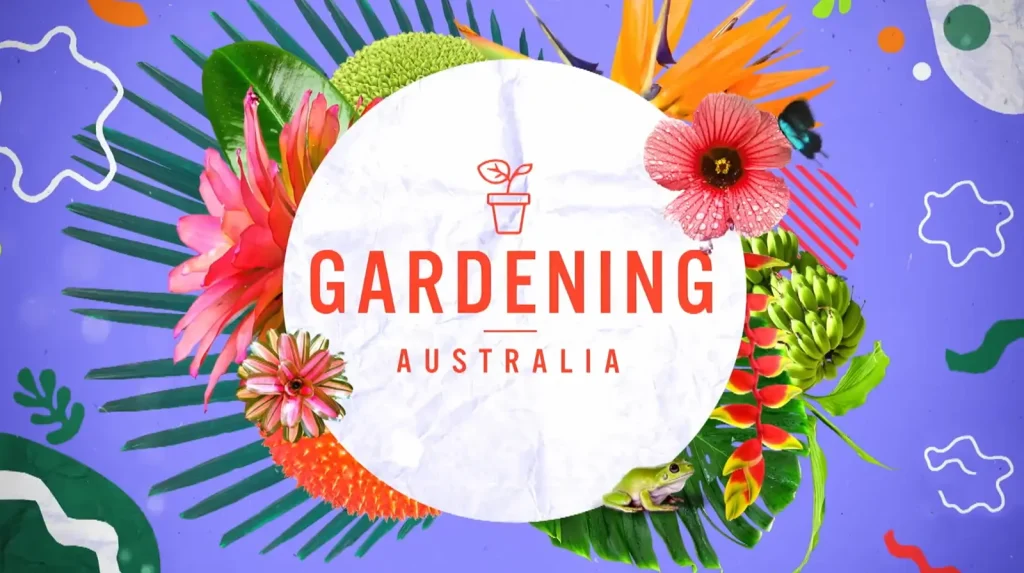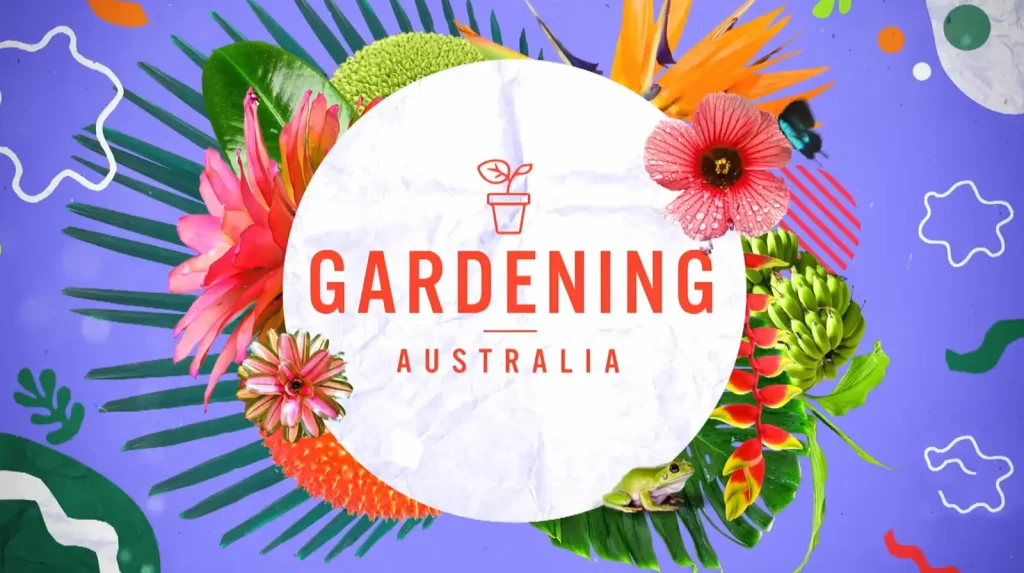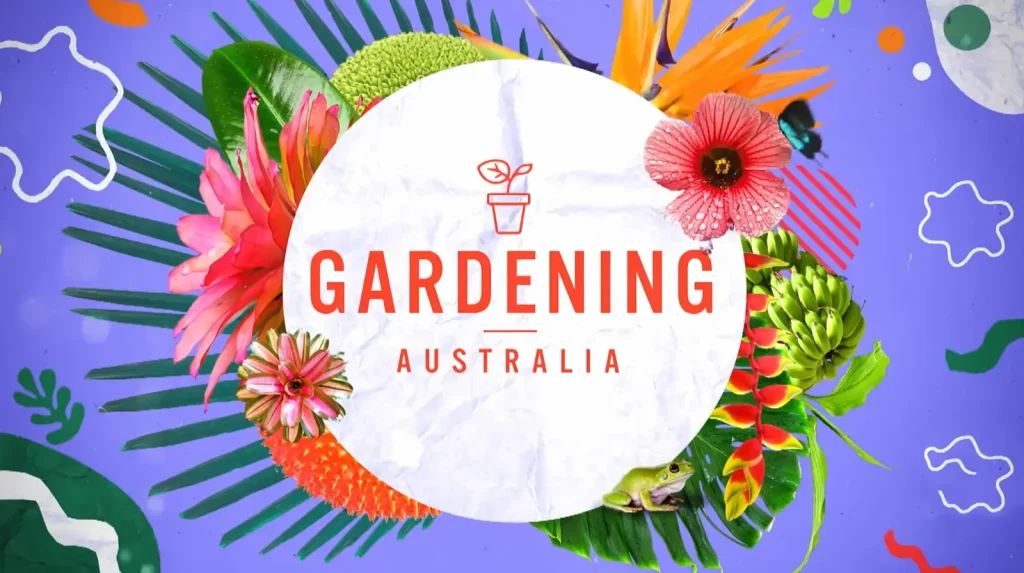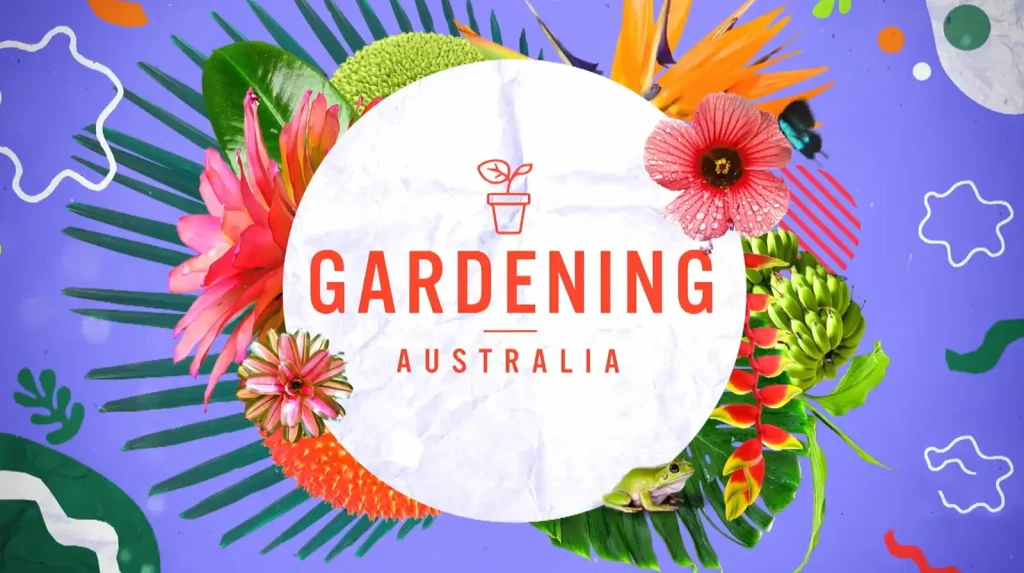In Gardening Australia 2024 episode 20, we delve into the wonders and challenges of winter gardening. Episode 20 of 2024, titled “Winter: Colourful Clivias & Pretty Proteas,” brings a fresh array of insights and inspiration for gardeners of all levels. Our journey begins with Costa, who has the pleasure of meeting the renowned clivia expert, often hailed as the ‘Clivia King.’ Costa explores the intricacies of growing these stunning, shade-loving plants that brighten even the gloomiest winter days with their vibrant blooms. The Clivia King shares his passion, tips, and tricks for cultivating these hardy yet beautiful plants, making them a perfect addition to any garden.
Next, we follow Hannah as she visits a remarkable shady garden that defies all odds. This garden thrives in the low light conditions of winter, showcasing a diverse range of plants that flourish without direct sunlight. Hannah speaks with the gardener behind this marvel, uncovering the secrets to creating a lush, green oasis in the shade. This segment offers practical advice for anyone looking to transform their shaded spaces into a thriving sanctuary.
Sophie then takes us on a journey through the mesmerizing world of proteas. These unique and striking flowers, part of the Proteaceae family, bring a touch of the exotic to any garden. Sophie profiles a variety of proteas, highlighting their distinct characteristics and the best practices for growing them. She visits a local grower who shares invaluable insights into the care and propagation of these resilient plants, ensuring they add year-round beauty to the landscape.
Clarence’s segment introduces us to a First Nations owned and operated nursery, a place where tradition and modern horticulture beautifully intersect. This nursery not only offers a range of native plants but also serves as a cultural hub, preserving and promoting indigenous knowledge and practices. Clarence’s visit sheds light on the importance of supporting indigenous enterprises and the unique benefits these native plants bring to our gardens and environment.
Gardening Australia 2024 episode 20
Finally, Millie provides a comprehensive guide to essential winter gardening tasks. From pruning and mulching to preparing the soil for spring planting, Millie covers a wide range of activities to keep your garden healthy and productive through the colder months. Her practical tips and step-by-step instructions ensure that even the novice gardener can tackle winter tasks with confidence.
Join us for this enlightening and inspiring episode of Gardening Australia, where we explore the resilience and beauty of winter gardens. Whether you are looking to add colorful clivias to your collection, transform a shady corner, embrace the exotic allure of proteas, support indigenous nurseries, or simply stay on top of your winter gardening chores, this episode has something for everyone.
Winter Gardening Down Under – Gardening Australia 2024 episode 20
Amidst the frosty mornings and shorter days of an Australian winter, a quiet magic unfolds in gardens across the country. While some may perceive this season as a time of dormancy, seasoned green thumbs know that it’s a period of vibrant color and unexpected bounty. Winter gardening in Australia presents a unique set of challenges, but it also offers exciting possibilities for those who dare to defy convention.
The Winter Garden’s Unexpected Charm
Contrary to popular belief, winter doesn’t signal the end of gardening endeavors. In fact, it’s a season that invites a distinct palette of hardy plants, many of which thrive in the cooler temperatures. As other flowers retreat, winter bloomers take center stage, painting landscapes with hues that defy the chill. Moreover, the winter harvest brings a delightful array of vegetables, proving that the kitchen garden need not lie fallow.
Clivias and Proteas: Resilient Winter Stars
Two stars of the winter garden stand out with exceptional resilience and captivating allure: clivias and proteas. These floral powerhouses not only endure the harsher conditions but also flourish, gracing gardens with their vibrant displays. Clivias, often called bush lilies, offer a burst of orange, yellow, or red, while proteas enchant with their exotic forms and textures.
Cultural Significance and Horticultural Appeal
Beyond their aesthetic appeal, both clivias and proteas hold cultural significance and have captured the hearts of gardening enthusiasts worldwide. Their adaptability to diverse climates and soil conditions makes them prized additions to gardens across Australia and beyond. Whether you’re a seasoned gardener or a budding enthusiast, these winter wonders are sure to inspire and delight.
As we delve deeper into this exploration of winter gardening, we’ll uncover the secrets to cultivating these remarkable plants and reveal the joy they bring to the colder months. Get ready to discover a world of winter blooms that will redefine your perception of gardening in the cooler seasons. After all, in the world of gardening, the possibilities are as endless as the changing seasons.
Clivias: The Resilient Beauties of Winter
In the heart of winter, when gardens seem to slumber, a regal flower emerges to defy the cold. Clivias, with their vibrant hues and lush foliage, are a testament to nature’s resilience and an embodiment of the unexpected beauty that winter can bring. Their story is one of royal connections, passionate breeders, and a vibrant future.
Clivias: A Royal Legacy
The tale of clivias begins in the early 19th century with Lady Charlotte Florentine Clive, Duchess of Northumberland. A passionate botanist and patron of the arts, Lady Clive was gifted a stunning orange-flowered plant from South Africa. Little did she know that this humble gift would spark a horticultural legacy. The plant, named Clivia nobilis in her honor, was the first of its kind to bloom in England, and it quickly captivated the hearts of gardeners across the country.
However, as with many botanical treasures, confusion arose over the pronunciation of this regal flower’s name. Was it “CLY-vee-a” or “CLY-via”? The answer, as confirmed by experts and enthusiasts alike, is the latter. So, let’s set the record straight and pronounce it with the respect it deserves: CLY-via. This seemingly minor detail is a nod to the flower’s rich history and ensures that we honor its namesake, Lady Clive.
Peter Hey: The King of Clivias
The story of clivias in Australia is intertwined with the passion and dedication of one man: Peter Hey. Dubbed the “King of Clivias,” Hey’s fascination with these resilient beauties began in his youth and blossomed into a lifelong pursuit. What started as a hobby collecting different varieties quickly evolved into a mission to breed the perfect clivia.
Hey’s approach to breeding is as unique as the flowers themselves. He eschews the traditional methods of cross-pollination, instead focusing on selecting and nurturing naturally occurring variations. This meticulous process has yielded a stunning array of clivias in every imaginable color, from fiery oranges and yellows to delicate pinks and even rare greens. Hey’s dedication to preserving genetic diversity and promoting hybrid vigor has not only elevated the status of clivias in the horticultural world but also ensured their continued resilience and adaptability. His legacy, much like Lady Clive’s, is one of passion, innovation, and a deep-seated love for these extraordinary winter bloomers.
As we delve further into the world of clivias, we’ll uncover the secrets to their care, cultivation, and the exciting possibilities of breeding. But for now, let’s simply marvel at the story of these resilient beauties, a story that spans continents, generations, and a shared passion for the unexpected wonders of the winter garden.
Proteas: Ancient Flowers for Modern Gardens
In the tapestry of the plant kingdom, few families are as captivating and diverse as the Proteaceae. This ancient lineage, with roots stretching back millions of years, boasts a breathtaking array of flowers and foliage that have enchanted gardeners and botanists alike. From the rugged landscapes of South Africa to the sun-drenched shores of Australia, the Proteaceae family has left its mark on both hemispheres, offering a treasure trove of horticultural delights.
Proteas: A Family of Diversity
The Proteaceae family is a testament to nature’s artistry, showcasing an astonishing variety of forms, colors, and textures. At its heart lies the iconic protea, a symbol of resilience and beauty. With its large, dramatic blooms resembling crowns or artichokes, the protea commands attention and sparks curiosity. But the family’s diversity doesn’t end there. Leucadendrons, with their striking foliage in fiery reds, golden yellows, and cool silvers, add a touch of drama to any landscape. Leucospermums, aptly named “pincushion flowers,” charm with their vibrant, needle-like blooms, attracting a flurry of pollinators.
The Proteaceae family’s reach extends far beyond South Africa. In Australia, it has given rise to beloved natives like banksias, waratahs, hakeas, and even the delicious macadamia nut. This shared ancestry is a testament to the ancient supercontinent Gondwana, where these plants once coexisted. Today, their presence in gardens across the globe serves as a living link to a bygone era.
Proteas in the Australian Landscape
Australian gardeners are fortunate to have a wealth of Proteaceae species to choose from, each with its unique charm and adaptability to local conditions. The ‘King Protea,’ with its majestic crimson blooms, is a showstopper in any garden. Meanwhile, lesser-known varieties like the delicate ‘Blushing Bride’ protea and the feathery-leaved ‘Safari Sunset’ leucadendron offer subtle elegance and year-round interest.
Whether you have a sprawling garden or a cozy balcony, there’s a Proteaceae plant to suit your space. Dwarf varieties like the ‘Little Prince’ protea thrive in pots, bringing a touch of the exotic to urban settings. For those seeking a burst of color, the vibrant orange and yellow blooms of the ‘Sunburst’ leucospermum are sure to brighten any winter day. And for a touch of whimsy, the ‘Red Devil’ leucadendron, with its crimson-tipped leaves, adds a playful element to the landscape.
FAQs Gardening Australia 2024 episode 20
Embarking on a winter gardening journey with clivias and proteas can be exciting, yet questions may sprout as readily as new leaves. Whether you’re a novice gardener or a seasoned enthusiast, these frequently asked questions will shed light on some common queries, empowering you to nurture your winter blooms with confidence.
What are the Best Clivia Varieties for Beginners?
For those dipping their toes into the world of clivias, certain varieties offer a gentle introduction to these captivating plants. Consider the ‘Natal Yellow,’ known for its cheerful yellow flowers and robust growth habit. Alternatively, the ‘Belgian Hybrid’ group boasts a wide range of colors and forms, catering to diverse preferences. These beginner-friendly clivias are relatively low-maintenance and forgiving, making them ideal for cultivating a green thumb. However, remember, even the most experienced gardeners started somewhere, so don’t hesitate to experiment and discover the varieties that speak to you.
How Do I Protect Proteas from Frost?
Protecting proteas from frost is crucial for their well-being, especially in regions prone to chilly winters. Fortunately, there are several strategies to safeguard these delicate blooms. Firstly, choose a planting site with good air circulation and protection from cold winds. Planting on a slight slope can also help prevent frost pockets from forming. Additionally, mulching around the base of the plants with organic matter like bark chips can provide insulation and retain soil warmth. In the event of a severe frost warning, consider covering your proteas with frost cloth or even a simple bedsheet. Remember, a little precaution goes a long way in ensuring your proteas thrive throughout the winter months.
Can I Grow Proteas in Pots?
Absolutely! Proteas can be grown in pots, making them accessible to gardeners with limited space or those who prefer container gardening. The key is to choose a pot that is sufficiently large to accommodate the mature size of the plant. Ensure the pot has excellent drainage, as proteas are susceptible to root rot in soggy conditions. Use a well-draining potting mix specifically formulated for Australian native plants. Additionally, position the pot in a sunny location and water regularly, allowing the soil to dry out slightly between watering. With proper care, potted proteas can flourish and bring a touch of the exotic to your patio, balcony, or courtyard.
Where Can I Buy Rare and Unusual Clivias?
For those seeking unique and rare clivias, specialized nurseries and online retailers offer a treasure trove of options. These establishments often cultivate a wide range of varieties, including those with unusual colors, patterns, and forms. Attending clivia shows and society meetings is another excellent way to connect with passionate growers and discover hidden gems. However, be prepared to pay a premium for rare specimens, as their limited availability and desirability drive up their prices. But for the avid collector, the thrill of owning a one-of-a-kind clivia is often worth the investment.
What Are Some Companion Plants for Proteas in the Garden?
Creating a harmonious and thriving garden involves more than just planting individual specimens. Companion planting, the practice of strategically combining different species, can enhance the health and beauty of your proteas. Consider pairing them with other Australian natives like grevilleas, banksias, or kangaroo paws. These plants share similar growing requirements and complement the unique textures and colors of proteas. Additionally, low-growing groundcovers like pigface or native grasses can help suppress weeds and retain soil moisture. Remember, diversity is key to a resilient and visually appealing garden, so don’t hesitate to experiment with different combinations and create your own winter wonderland.
Conclusion: Embrace the Winter Garden
As the sun dips lower in the sky and a crispness fills the air, the winter garden beckons with its unique allure. It’s a time to celebrate the resilience of nature, to marvel at the unexpected beauty that emerges from the cold, and to discover the joy of cultivating a garden that thrives in the off-season. Clivias and proteas, with their vibrant hues and captivating forms, are just the beginning of what your winter garden can offer.
A Tapestry of Winter Blooms
Imagine stepping into your garden on a frosty morning to be greeted by a vibrant tapestry of color. Clivias, like radiant jewels, illuminate shady corners with their fiery oranges, yellows, and reds. Meanwhile, proteas, with their bold textures and architectural shapes, add a touch of drama and intrigue. These are not just flowers; they are symbols of perseverance, thriving in conditions that would deter lesser plants.
By embracing the winter garden, you not only extend the growing season but also create a sanctuary of beauty and wonder during a time when nature often seems to rest. Imagine the satisfaction of harvesting fresh vegetables from your winter garden, savoring the flavors of homegrown produce when the markets offer less. It’s a testament to your skill as a gardener and a celebration of the cycle of life.
A Journey of Discovery and Delight
Winter gardening is more than just a practical endeavor; it’s a journey of discovery and delight. As you nurture your clivias and proteas, you’ll gain a deeper appreciation for the resilience of nature and the interconnectedness of all living things. You’ll witness firsthand the delicate dance of pollinators drawn to the vibrant blooms, and you’ll marvel at the intricate details of each flower, leaf, and stem.
This journey is not without its challenges, of course. But with the knowledge and tools you’ve gained from this guide, you’re well-equipped to overcome any obstacles that come your way. And remember, every challenge is an opportunity for growth and learning. So, don’t be afraid to experiment, to try new things, and to push the boundaries of what you think is possible in your winter garden.
The rewards, both tangible and intangible, are immeasurable. From the sheer joy of witnessing a clivia burst into bloom on a cold winter’s day to the satisfaction of sharing your homegrown produce with loved ones, winter gardening offers a wealth of experiences that will enrich your life and connect you to the natural world in a profound way. So, embrace the season, nurture your plants, and let your winter garden flourish.
